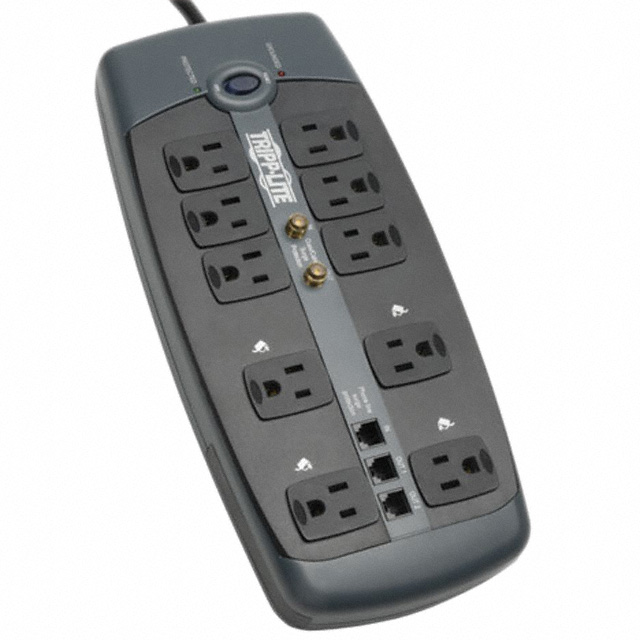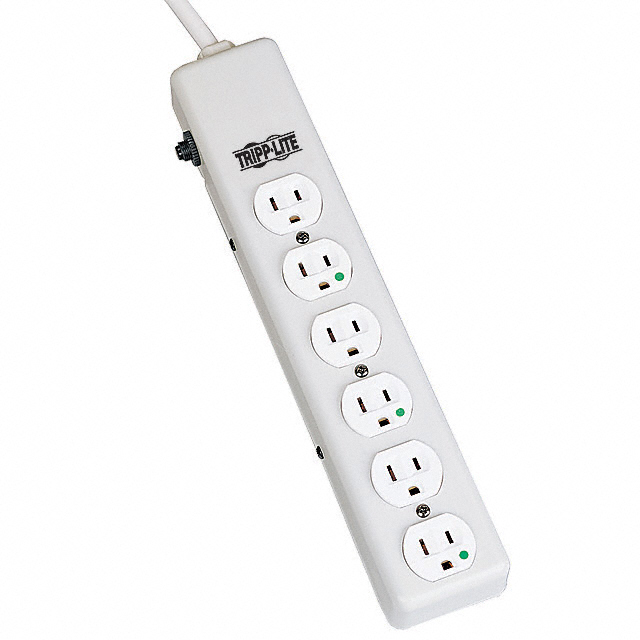

- RFQ
- BOM
-
Contact Us
Tel: +86-0755-83501315
Email: sales@sic-components.com
- Chinese
- English
- French
- German
- Portuguese
- Spanish
- Russian
- Japanese
- Korean
- Arabic
- Irish
- Greek
- Turkish
- Italian
- Danish
- Romanian
- Indonesian
- Czech
- Afrikaans
- Swedish
- Polish
- Basque
- Catalan
- Esperanto
- Hindi
- Lao
- Albanian
- Amharic
- Armenian
- Azerbaijani
- Belarusian
- Bengali
- Bosnian
- Bulgarian
- Cebuano
- Chichewa
- Corsican
- Croatian
- Dutch
- Estonian
- Filipino
- Finnish
- Frisian
- Galician
- Georgian
- Gujarati
- Haitian
- Hausa
- Hawaiian
- Hebrew
- Hmong
- Hungarian
- Icelandic
- Igbo
- Javanese
- Kannada
- Kazakh
- Khmer
- Kurdish
- Kyrgyz
- Latin
- Latvian
- Lithuanian
- Luxembou..
- Macedonian
- Malagasy
- Malay
- Malayalam
- Maltese
- Maori
- Marathi
- Mongolian
- Burmese
- Nepali
- Norwegian
- Pashto
- Persian
- Punjabi
- Serbian
- Sesotho
- Sinhala
- Slovak
- Slovenian
- Somali
- Samoan
- Scots Gaelic
- Shona
- Sindhi
- Sundanese
- Swahili
- Tajik
- Tamil
- Telugu
- Thai
- Ukrainian
- Urdu
- Uzbek
- Vietnamese
- Welsh
- Xhosa
- Yiddish
- Yoruba
- Zulu
- Kinyarwanda
- Tatar
- Oriya
- Turkmen
- Uyghur
SIC MAX7000 Series
As a trusted partner in advanced electronic components, SIC proudly presents the MAX 7000 Series (https://www.sic-components.com/product/search?search=EPM7064QC100) Complex Programmable Logic Devices (CPLDs), a testament to Altera’s (now Intel) engineering excellence and our commitment to delivering cutting-edge solutions. Designed for versatility, reliability, and ease of use, these CPLDs empower engineers and enterprises to tackle diverse applications, from high-speed industrial control to embedded system design.
1. MAX 7000 Series Core Features: Redefining Logic Design Flexibility ( https://www.sic-components.com/product/search?search=EPM7064STC100 )
The MAX 7000 Series leverages Altera’s second-generation MAX architecture, combining EEPROM-based non-volatile technology with innovative features to streamline development and enhance system performance:
High-Speed Performance: Achieve blazing-fast logic execution with 5-ns pin-to-pin delays (e.g., EPM7128S device) and up to 175.4-MHz counter frequencies, ideal for real-time data processing and high-speed communication interfaces.
In-System Programmability (ISP): Simplify design iterations with 5.0V ISP via JTAG interface (IEEE 1149.1 compliant), enabling on-board programming and debugging without hardware removal—perfect for rapid prototyping and field updates.
Robust Logic Resources: Choose from 600 to 5,000 usable gates and 32 to 256 macrocells (e.g., EPM7256S for complex logic integration), supporting both combinatorial and sequential logic with programmable registers and flip-flops.
MultiVolt Compatibility: Seamlessly interface with mixed-voltage systems using 3.3V/5.0V I/O support (excluding 44-pin packages), reducing design complexity in heterogeneous environments.
Reliability Built for Harsh Environments
Engineered to thrive in challenging conditions, MAX 7000 devices offer:
Industrial-Grade Durability: Wide temperature range (-40°C to +85°C for industrial models) and rugged packaging options (PLCC, PQFP, TQFP), ensuring stable performance in automotive, aerospace, and industrial automation applications.
Design Security: A programmable security bit protects proprietary logic from unauthorized access, while built-in JTAG boundary-scan testing (for 128+ macrocell devices) ensures system-level debug and reliability.
Low Power, High Efficiency: Activate power-saving mode to reduce macrocell power consumption by over 50%, balancing performance and energy efficiency in battery-driven or portable devices.
2. MAX 7000 Series Products:
EPM7128SQC100-6N https://www.sic-components.com/product/search?search=EPM7128SQC100-6N
Key Features: 128 macrocells, 84 I/O pins, 3.3V power supply, operating temperature range of 0°C to 70°C, maximum system clock frequency of 147.1MHz, 6ns signal propagation delay, 100-pin FBGA package.
EPM7064QC100-10 https://www.sic-components.com/product/search?search=EPM7064QC100-10
Key Features: 64 macrocells, 68 I/O pins, 5V power supply, operating temperature range of 0°C to 70°C, maximum system clock frequency of 151.5MHz, 6ns signal propagation delay, 100-pin FBGA package.
EPM7128SQC100-6 https://www.sic-components.com/product/search?search=EPM7128SQC100-6
Key Features: 128 macrocells, 84 I/O pins, 3.3V power supply, operating temperature range of 0°C to 70°C, maximum system clock frequency of 147.1MHz, 6ns signal propagation delay, 100-pin FBGA package.
EPM7064QC100-15 https://www.sic-components.com/product/search?search=EPM7064QC100-15
Key Features: 64 macrocells, 68 I/O pins, 5V power supply, operating temperature range of 0°C to 70°C, 100-pin FBGA package.
Comparison Summary
Capacity: The EPM7128 series offers more macrocells and I/O pins than the EPM7064 series, making it suitable for more complex logic designs.
Voltage: The EPM7128S series operates on 3.3V, while the EPM7064 series uses 5V.
Speed: The EPM7064QC100-10 features a higher clock frequency of 151.5MHz.
Package: All four devices use the FBGA-100 package, requiring specific PCB design and soldering considerations.
3. MAX 7000 and MAX7000S https://www.sic-components.com/product/search?search=EPM7064QC100
The MAX 7000 and MAX 7000S are series of Complex Programmable Logic Devices (CPLDs) developed by Altera (now part of Intel). They are widely used in digital logic design for applications such as embedded systems, consumer electronics, and industrial control. Below is a detailed comparison of their key characteristics, differences, and applications:
Common Features (MAX 7000 and MAX 7000S)
Both series belong to Altera’s MAX (Multiple Array Matrix) family and share the following core features:
Architecture: Based on a sum-of-products (SOP) architecture with macrocells for logic implementation. Each macrocell includes a combinational logic block and a flip-flop for sequential logic.
Non-Volatile Programming: Use EEPROM (Electrically Erasable Programmable Read-Only Memory) for programming, allowing persistent storage of logic configurations without external memory.
Programming Interface: Support JTAG (Joint Test Action Group) programming via the Altera Quartus II development environment.
Applications: Suitable for medium-scale logic designs, including glue logic, state machines, I/O expansion, and low-cost programmable logic solutions.
Key Differences: MAX 7000 vs. MAX 7000S( https://www.sic-components.com/product/search?search=EPM7064STC100 )
The MAX 7000S is an enhanced variant of the original MAX 7000 series, optimized for specific performance and power requirements. Here’s how they differ:
Feature MAX 7000 MAX 7000S
Power Supply Voltage Primarily 5V (some models support 3.3V). 3.3V only (low-voltage compatible).
Power Consumption Higher power consumption (standard TTL logic). Lower power consumption (CMOS-compatible, suitable for low-power designs).
Speed Grades Slower to moderate speed (e.g., 7ns to 15ns propagation delay). Faster speed grades (e.g., 5ns to 10ns propagation delay) for higher-frequency applications.
Package Types Common packages: PLCC, QFP, TQFP. Includes surface-mount technology (SMT) packages like FBGA (Fine-Pitch Ball Grid Array) for compact PCB designs.
I/O Compatibility Designed for 5V systems. Native 3.3V I/O compatibility, making it suitable for mixed-voltage systems (e.g., interfacing with 3.3V microprocessors).
Density Range Macrocells: 32 to 256. Macrocells: 64 to 256 (similar density range but with optimized layout for speed and power).
Example Models EPM7032, EPM7064, EPM7128 (5V variants). EPM7128S, EPM7256S (3.3V, SMT packages).
Applications and Use Cases
MAX 7000 (5V Series) ( https://www.sic-components.com/product/search?search=EPM7064STC100 )
Legacy Systems: Ideal for retrofitting or maintaining older 5V-based designs (e.g., industrial equipment, legacy embedded systems).
Cost-Sensitive Projects: Lower cost for simple logic functions in non-voltage-sensitive applications.
Example Use Cases:
Simple state machines in factory automation.
I/O expansion for 5V microcontrollers.
Glue logic in FPGA-based systems requiring 5V compatibility.
MAX 7000S (3.3V Series) ( https://www.sic-components.com/product/search?search=EPM7064STC100 )
Modern Low-Voltage Systems: Suitable for 3.3V or mixed-voltage (3.3V/5V) designs, such as those using modern microprocessors or FPGAs.
High-Speed Applications: Faster propagation delays make them suitable for moderate-frequency digital signal processing or timing-critical logic.
Compact Designs: SMT packages (e.g., FBGA) enable smaller PCBs, making them popular in consumer electronics and portable devices.
Example Use Cases:
Portable medical devices requiring low power.
High-speed data acquisition systems.
Interfacing between 3.3V FPGAs and peripheral components.
Development and Tools
Both series are supported by Altera Quartus II (now Intel Quartus Prime), which provides:
Logic synthesis and simulation.
JTAG programming via USB or parallel port.
Device-specific libraries and IP cores.
For compatibility with modern tools, note that:
The MAX 7000S series is more likely to be supported in newer Quartus versions.
Legacy MAX 7000 (5V) devices may require older Quartus releases or migration to newer CPLD families (e.g., MAX II) for long-term support.
Migration Considerations
If upgrading from MAX 7000 to MAX 7000S or newer families:
Voltage Migration: Ensure the system supports 3.3V logic. If using 5V inputs, level shifters may be required.
Package Migration: SMT packages (e.g., FBGA) require reflow soldering, unlike through-hole PLCC/QFP packages.
Performance Upgrade: Leverage faster speed grades in MAX 7000S for frequency-sensitive designs.
Long-Term Availability: Older MAX 7000 devices may be deprecated, while MAX 7000S models are more likely to be in production (check Intel’s product lifecycle status).
Summary
Series Voltage Power Speed Package Type Ideal For
MAX 7000 5V Higher Moderate PLCC, QFP (through-hole) Legacy 5V systems, cost-sensitive projects.
MAX 7000S 3.3V Lower Faster FBGA, TQFP (SMT) Modern low-voltage, high-speed, compact designs.
For new designs, the MAX 7000S is generally preferred due to its lower power, faster speeds, and compatibility with modern 3.3V systems. For legacy maintenance, the original MAX 7000 may still be suitable if voltage and package constraints are met.
4. SIC Value-Added Services: From Selection to Delivery
As an authorized partner, SIC enhances your MAX 7000 experience with end-to-end support:
Extensive Inventory: Stocking popular models like EPM7160STI100-10N, EPM7128S, and EPM7256S, with global warehouses ensuring 48-hour shipping for urgent orders.
Technical Expertise: Our engineers assist with logic resource optimization, timing analysis, and alternative part selection (e.g., replacing obsolete models with pin-compatible variants like EPM7160STC100-6N for extended temperature ranges).
Quality Assurance: 100% genuine products sourced directly from Altera, accompanied by factory test reports, RoHS compliance certificates, and ISO 9001-certified quality control.
Design Tools Integration: Seamless compatibility with Altera’s Quartus and MAX+PLUS II development systems, supporting Verilog, VHDL, and EDIF netlists for efficient design entry and simulation.
5. MAX 7000 Series Applications Across Industries
The MAX 7000 Series excels in diverse scenarios, including:
Industrial Control: Implementing PLC logic, motor control timing, and sensor data preprocessing with low-latency performance (e.g., EPM7096 for compact, high-density solutions).
Communication Systems: Converting protocols (UART, SPI, I2C) and optimizing signal processing in network interfaces, leveraging high-speed I/O and JTAG-based diagnostics.
Embedded Systems: Extending microcontroller peripherals, designing real-time state machines, and enhancing security with hardware encryption modules (e.g., EPM7032S for cost-effective edge devices).
Consumer Electronics: Driving display logic, expanding I/O for smart home hubs, and ensuring reliable performance in low-power, space-constrained designs.
Why Choose SIC for MAX 7000 CPLDs?
Unmatched Availability: Access hard-to-find and legacy models alongside the latest variants, backed by our robust supply chain.
Cost-Effective Solutions: Tiered pricing for bulk orders and engineering samples for prototyping, maximizing ROI for both small projects and large-scale production.
Global Support: 24/7 technical assistance, from initial component selection to post-sales support, ensuring smooth integration and minimal downtime.
Experience the MAX 7000 Advantage with SIC
Whether you’re designing a next-gen industrial controller or a compact embedded system, the MAX 7000 Series via SIC delivers the perfect blend of performance, flexibility, and reliability.
Explore our MAX 7000 (https://www.sic-components.com/product/search?search=EPM7064QC100) portfolio today and discover how SIC transforms advanced logic technology into tangible design success. Visit www.sic-electronics.com/max7000 to request a datasheet, sample, or custom BOM quote.
SIC – Empowering Innovation, One Component at a Time.
Precision. Performance. Trust.

Hot Products
View MoreRelated Blogs

2000+
Daily average RFQ Volume

30,000,000
Standard Product Unit

2800+
Worldwide Manufacturers

15,000 m2
In-stock Warehouse















 Wishlist (0 Items)
Wishlist (0 Items)